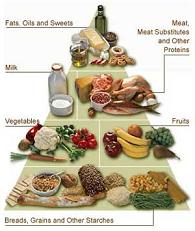I had a typical reaction to the disaster in Myanmar: wanting to do something. I have spent very little time looking into the area of disaster relief, so after a bit of Googling and discussion with Elie, I gave to Population Services International for two reasons:
- PSI was the winner of our “saving lives” cause for 2007; we are extremely impressed with the organization as a whole, particularly its commitment to thorough self-monitoring. We don’t know much about their relief operations, but I would bet on PSI over any other international relief organization I know of just in terms of the extent to which it “runs a tight ship” with solid monitoring and oversight that allows accountability from the field to the top.
- PSI has a major and long-established presence in Myanmar; I believe (based mostly on this article) that having a pre-existing presence is important, particularly in a situation like this where the idiosyncracies of the area and particularly government seem important. I’m most comfortable with an organization that is used to getting work done in this political and cultural environment.
This is an informal, personal recommendation; it is backed not by an in-depth research project, but by the quick heuristics above.
This also got me thinking, though, about the more general cause of “disaster relief.” We looked into this cause back in 2006 (when we were still a part-time group of volunteers) and found very little. We aren’t aware of any organizations that are exclusively committed to disaster relief; rather, it seems to us that most relief efforts come from large humanitarian organizations, such as PSI, the Red Cross, World Vision, CARE, Direct Relief International, etc. that spend most of their time and money on direct, day-to-day (not disaster-related) aid. This makes sense, since it means emergency aid efforts can be aided by already-on-the-ground presences.
However, it isn’t necessarily the case that the best “day-to-day” relief organization is the best disaster relief organization. The former may be best accomplished through meticulously planned long-term projects that rely on proven techniques to get the maximal dollar-for-dollar impact; by contrast, I would guess that a disaster presents problems that are unusually simple to solve (people who need basic supplies, but who don’t necessarily suffer from a host of interrelated physical, economic, and cultural obstacles), and that speed and efficiency are more important. I’d be very interested in a compiled summary of disaster relief efforts over the last 10 or so years – which organizations were first, and most instrumental, in each relief effort. It seems feasible that such a summary could be created by polling affected governments and citizens, but I’ve never seen one.
I also wonder whether there are cost-effective “disaster preparedness” measures that can aid particularly vulnerable areas in advance. I was shocked at the death toll from this particular disaster, and I wonder whether a similar storm in the U.S. could have been nearly as devastating. It’s possible that disaster preparedness comes mostly from widespread economic prosperity, and that nonprofits are ill-equipped to bring about the kinds of drastic changes that would be needed to improve preparedness (and/or that the areas least equipped for disasters also have other, more important problems). But it also seems possible to me that constructing some extra shelters – or equipping communication infrastructure to provide effective early warnings – could save lives far more effectively than focusing only on after-the-fact interventions.
Looking into these questions, as with just about any area of philanthropy I can think of, would take significant time and resources. I’m not sure whether we’ll get to do it anytime in the near future. But it seems likely to me that the costs of such investigation would be more than justified. When disaster strikes, a lot of people reach straight for their wallets, and give without having time to think about their different options. But the thinking could be done, centrally, in advance – imagine what a difference that would make.


